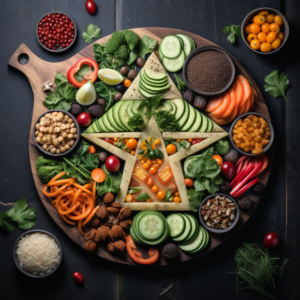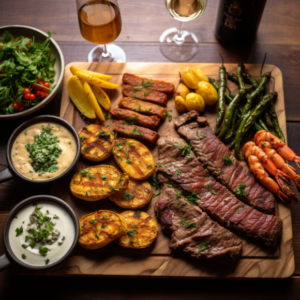Embark on a culinary expedition to the vast and enchanting landscapes of Mongolia, where nomadic traditions and unique ingredients create a remarkable tapestry of flavors. Mongolian cuisine, deeply rooted in the country’s nomadic heritage, offers a tantalizing array of exotic foods that reflect the resourcefulness and resilience of the nomadic way of life. In this captivating article, we delve into the depths of Mongolian gastronomy, exploring its traditional dishes, iconic ingredients, and the cultural heritage that has shaped this culinary treasure.
We begin by unraveling the essence of Mongolian cuisine, which combines simplicity, hearty flavors, and a close connection to the land. From the robust tastes of meat and dairy products to the use of wild herbs and aromatic spices, Mongolian dishes celebrate the traditions of herding and the harmony between humans and nature. We explore the foundational elements that define Mongolian cooking, such as mutton, horse meat, dairy products, and the versatile use of grains.
Delve into the traditional dishes that have sustained nomadic communities for centuries. From the iconic flavors of buuz (steamed dumplings) to the hearty warmth of khorkhog (meat cooked with hot stones), we showcase the diversity and richness of Mongolian flavors. Explore the savory delights of khuushuur (fried meat pastries), the comforting sips of airag (fermented mare’s milk), and the distinctive flavors of boodog (meat cooked inside a carcass).
Immerse yourself in the mastery of Mongolian dairy products, which play a central role in nomadic culinary traditions. We delve into the flavors and techniques used in creating staples such as aaruul (dried curd), tarag (yogurt), and byaslag (cheese). Discover the art of making traditional dairy products from mare’s milk, yak milk, and the treasured summer delicacy of khailmag (clotted cream).
Explore the world of fermented foods in Mongolian cuisine, which provide sustenance during the long winters and preservation of ingredients. We delve into the unique flavors and textures of aaruul (dried curd), and the tangy delights of tsagaan idee (fermented vegetables) and shimiin arkhi (fermented mare’s milk spirits). Discover the cultural significance of fermentation and its role in Mongolian culinary traditions.
Delve into the flavors of wild ingredients in Mongolian cuisine, sourced through hunting and gathering. We explore the unique tastes and preparations of game meats like boar and venison, as well as the use of wild berries, mushrooms, and herbs. Discover the nomadic skill of foraging and the art of incorporating wild ingredients into traditional dishes.
Mongolian cuisine is deeply intertwined with cultural practices and festive celebrations. We delve into the cultural significance of feasts such as Naadam, where traditional dishes like khuushuur and bansh (steamed dumplings) take center stage. Discover the hospitality of Mongolian nomads and the communal dining experiences that foster social bonds and honor the richness of Mongolian traditions.
Mongolian cuisine is a testament to the nomadic spirit and the harmonious relationship between the land and its people. From traditional dishes to the art of dairy products and the use of wild ingredients, Mongolian gastronomy invites us to appreciate the resourcefulness and adaptability of nomadic culinary traditions. As we conclude this culinary exploration, may the exotic flavors of Mongolia continue to inspire and transport you to the vast landscapes of nomadic life.



